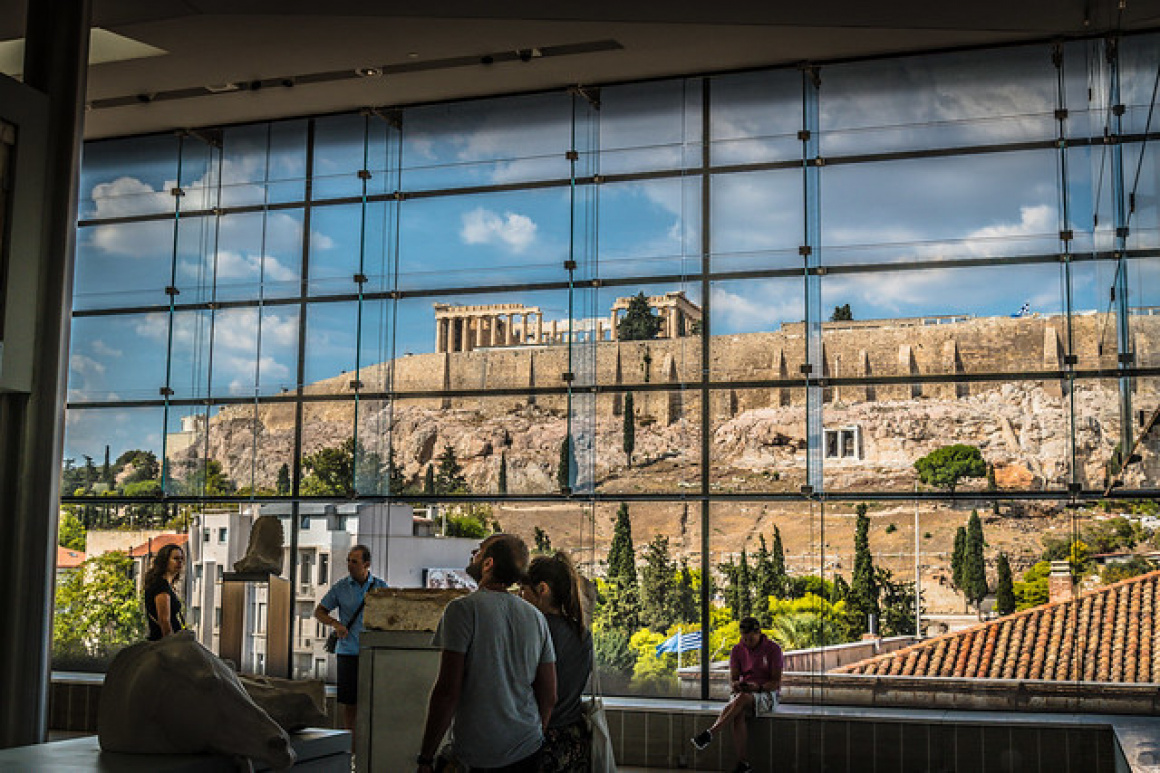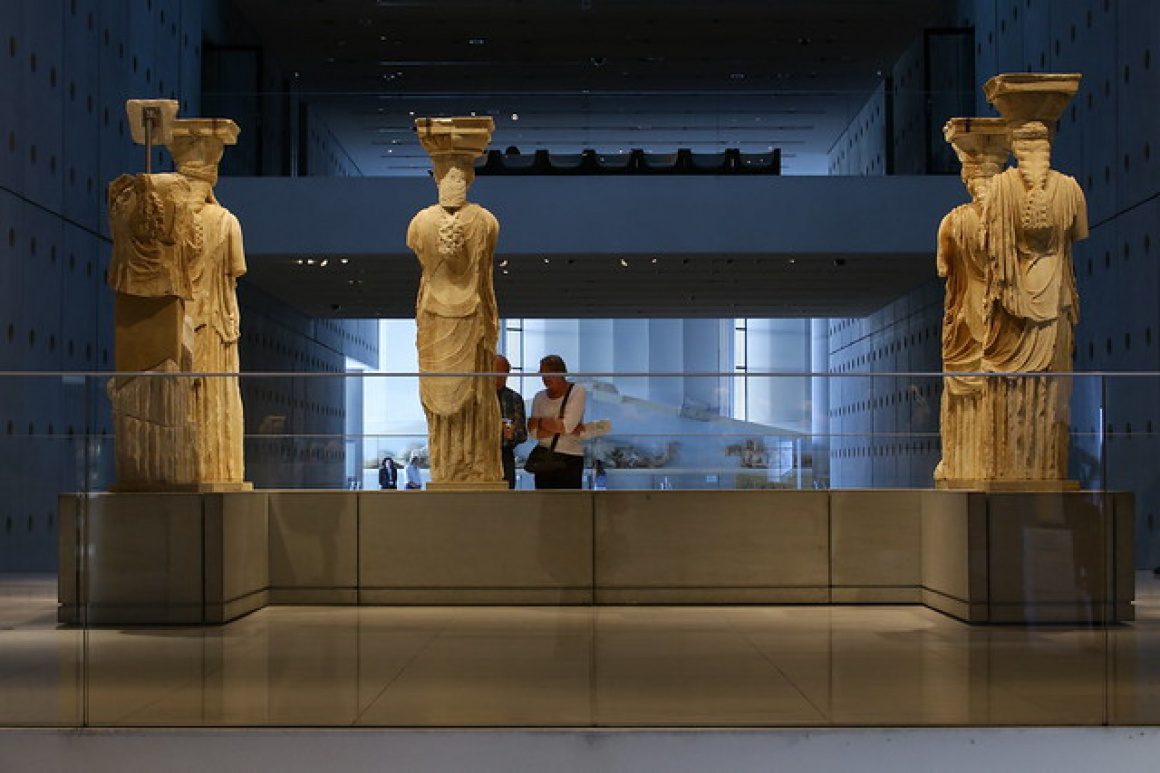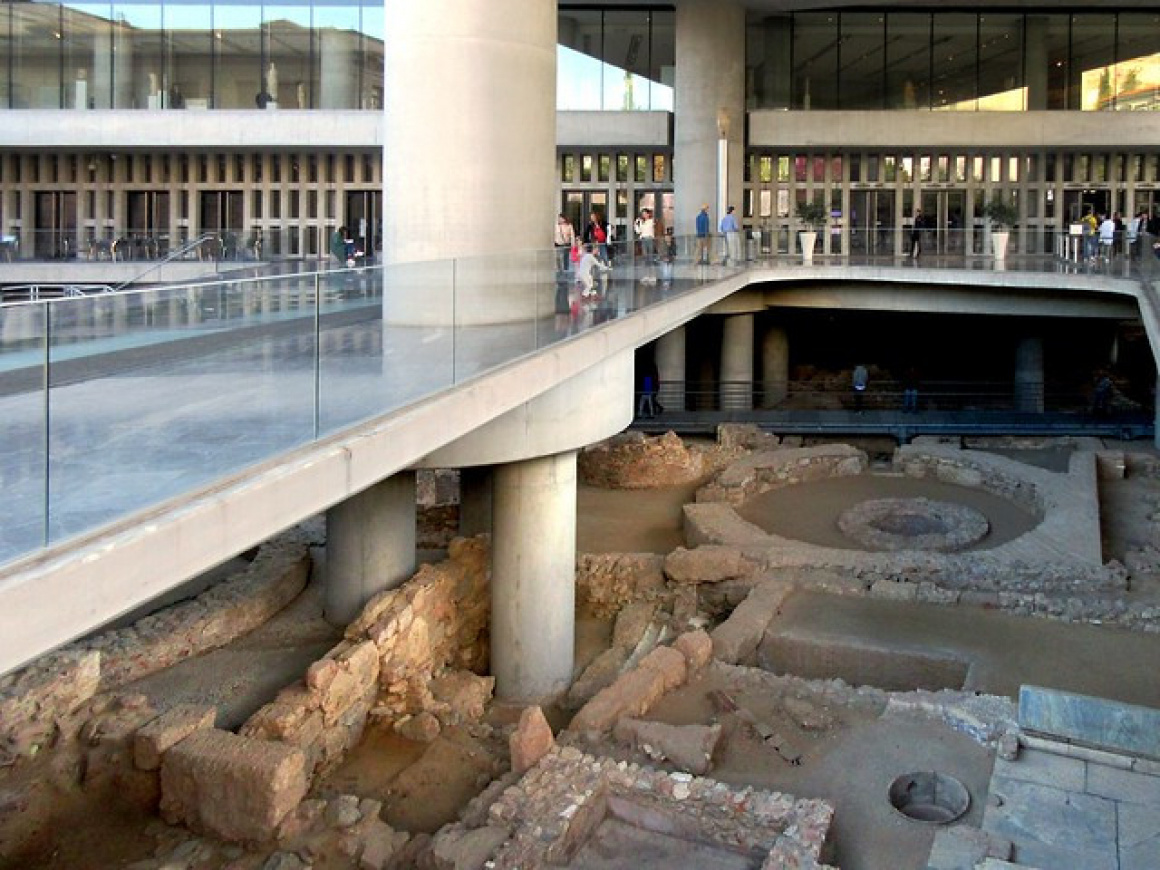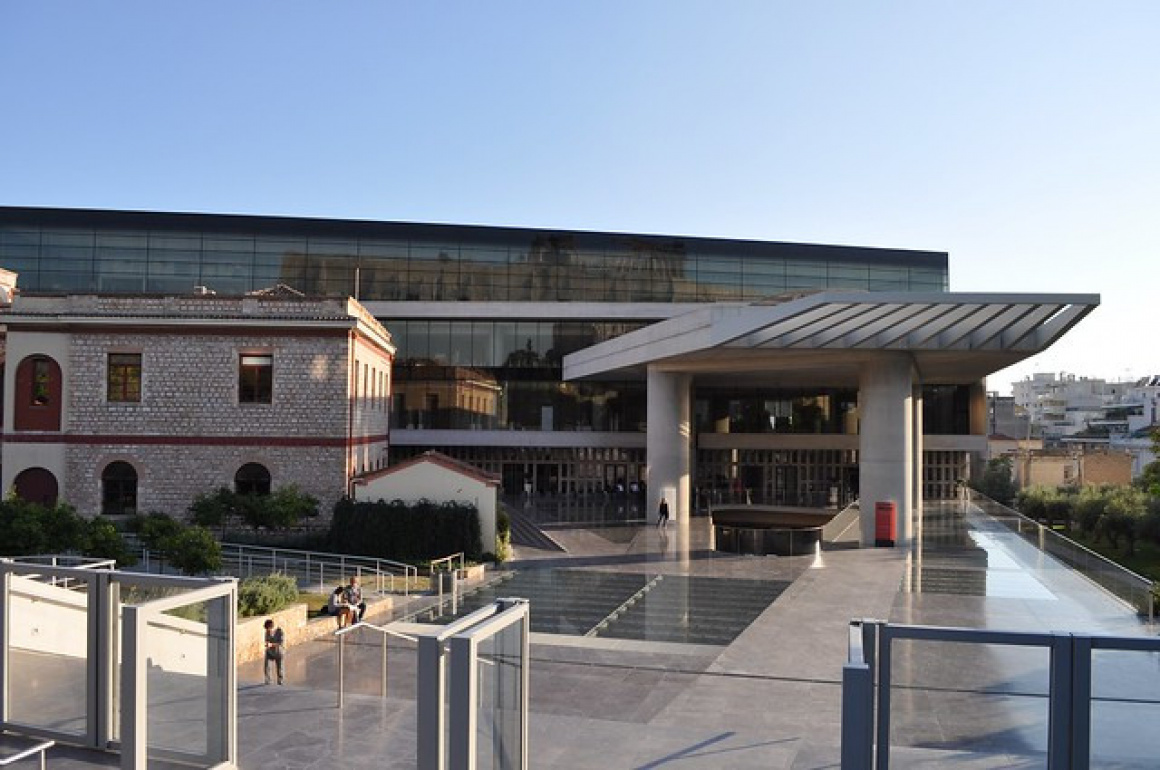The Acropolis Museum is one of Athens’ most celebrated landmarks, standing as a testament to the city’s deep connection to its ancient past. Opened on 20 June 2009, this modern museum, spanning 14,000 square metres and housing over 4,250 artefacts, was built to showcase the treasures of the Acropolis and its surrounding slopes. Located just 300 metres southeast of the Parthenon, in the historic Makrygianni area, the museum offers a striking juxtaposition of contemporary architecture and millennia-old heritage. With its thoughtful design and carefully curated exhibits, the Acropolis Museum is an unmissable experience for anyone visiting Athens.

 'Acropolis Museum' - Attribution: Phanatic
'Acropolis Museum' - Attribution: PhanaticA Journey Through History
The idea of a dedicated Acropolis Museum has deep historical roots. The first museum on the Acropolis hill, built in 1874, quickly became too small to house the growing number of artefacts uncovered during archaeological excavations. By the late 20th century, the call for a new museum gained momentum, particularly as Greece sought the return of the Parthenon Marbles from the British Museum. A world-class space was needed to house the sculptures and display them as part of their cultural context.
\rThe current museum was designed by Bernard Tschumi in collaboration with Greek architect Michael Photiades. Its innovative design incorporates glass floors, allowing visitors to view excavations of Roman and early Byzantine Athens below, creating a unique sense of walking over layers of history.\r
Exploring the Exhibits
The Acropolis Museum is thoughtfully organised across four main levels, each offering a unique perspective on the rich history of the Acropolis and ancient Athens.\r
The Ground Floor: Life on the Slopes
\rVisitors begin their journey on the ground floor, where artefacts from the Acropolis slopes reveal insights into everyday life. Highlights include terracotta figurines, ancient cooking utensils, and votive offerings. Among these treasures are intricate reliefs dedicated to Dionysus, the god of theatre and wine, reflecting the cultural significance of the nearby\rTheatre of Dionysus.\r
The Archaic Gallery: Early Athenian Artistry
\rThe first-floor Archaic Gallery showcases the vibrant art of the Archaic period (700–480 BCE). Notable are the Kore statues, representations of young women that once adorned the Acropolis. These statues are celebrated for their serene expressions and elaborate hairstyles. Traces of paint visible on some statues hint at their once-colourful appearance, providing a rare glimpse into the polychromatic world of ancient Greece.\r
The Caryatids
\rOne of the museum’s most iconic attractions is the Caryatids, the elegant maidens that once supported the Erechtheion’s south porch. These statues are displayed in an open and airy space, allowing visitors to marvel at their intricate hairstyles and flowing drapery. The damaged fifth Caryatid, removed by Lord Elgin, is represented here, a poignant reminder of Greece’s efforts to reunite these treasures.\r
The Parthenon Gallery
\rThe museum’s top floor is a showstopper. This glass-encased space aligns perfectly with the Parthenon on the Acropolis, offering panoramic views of the monument. The gallery houses fragments of the Parthenon’s friezes, metopes, and pediments. These are displayed in their original sequence, with empty spaces marking the missing pieces currently held in other collections, such as the British Museum.

 'ACROPOLIS MUSEUM' - Attribution: michelsimeonidis
'ACROPOLIS MUSEUM' - Attribution: michelsimeonidisInteractive and Educational Features
The Acropolis Museum embraces technology to enhance visitor engagement. Multimedia displays offer reconstructions of ancient buildings, while augmented reality (AR) apps allow users to visualise how the Acropolis appeared in its prime. Interactive touchscreens provide detailed explanations of exhibits, making the experience accessible to both casual visitors and history enthusiasts.
\rFor families, the museum organises educational activities, including treasure hunts and storytelling sessions designed to captivate young minds. A highlight for tech-savvy visitors is the 3D presentation of the Parthenon sculptures, which brings these masterpieces to life.\r
Cultural Significance and Modern Identity
More than just a repository of ancient relics, the Acropolis Museum serves as a vital link between the splendour of the past and the dynamic spirit of modern Greece. Its very existence speaks volumes about a nation's determination to reclaim its artistic heritage and present it to the world with the dignity it deserves, a goal clearly seen in the creation of this world-class space. But the museum's significance extends beyond simple display; it has become a powerful catalyst, sparking conversations that resonate far beyond its walls. Millions are drawn here, not just to admire the sculptures, the ceramics, and the architectural fragments, but also to grapple with questions about cultural preservation, the ethics of restitution (the very issues that spurred the museum's creation in the first place), and the shared responsibility we have in ensuring that the lessons and beauty of the past are not lost. It is in these conversations, as much as in the artefacts themselves, that the museum’s true power lies.

 'Acropolis Museum' - Attribution: D-Stanley
'Acropolis Museum' - Attribution: D-StanleyEvents and Temporary Exhibitions
The museum hosts a dynamic programme of temporary exhibitions, cultural events, and academic lectures. Past exhibitions have explored topics ranging from ancient burial practices to the role of mythology in art. Check the museum’s calendar in advance to align your visit with these special events, as they often offer unique perspectives on ancient and modern Greece.
Good to Know: Tickets, Tips, and Free Admission
Tickets and Admission
As of 2025, general admission tickets are priced at €10 during the high season (April to October) and reduced to €5 in the low season (November to March). Children under 18, students from the EU, and certain other groups can enter free of charge, while non-EU students enjoy discounted rates. Tickets can be purchased online or at the museum entrance, but booking in advance is advisable during the busy summer months.
Free Admission Days
The Acropolis Museum offers free entry on select days, including:
- 6 March (Melina Mercouri Day)
- 25 March (Greek Independence Day)
- 18 May (International Day of Museums)
- 28 October (Ohi Day, a national holiday)
When to Visit
To avoid crowds, arrive early in the morning or late in the afternoon. On summer Fridays, the museum stays open until 10 pm, offering a unique chance to enjoy the exhibits under the tranquil glow of evening light.

 'Acropolis Museum' - Attribution: Scott McLeod
'Acropolis Museum' - Attribution: Scott McLeodUnique Features
The glass floors are one of the museum’s standout features. Beneath your feet, the ruins of ancient neighbourhoods are visible, with remnants of houses, workshops, and streets dating back to Roman and Byzantine Athens. Archaeologists still work on-site, making this a rare opportunity to witness history being unearthed in real time.
\rDon’t miss the second-floor café, which serves a delightful array of Greek dishes. With a terrace offering uninterrupted views of the Acropolis, it’s an ideal spot to take a break while soaking in the atmosphere.
Why the Acropolis Museum is Unmissable
Beyond being a collection of artefacts, the Acropolis Museum tells the story of Athens’ most iconic landmark and its enduring influence on Western civilisation. From its carefully curated exhibits to its breathtaking views, the museum provides an unparalleled window into the ancient world. Whether you’re a history buff, a curious traveller, or a family looking to explore, this modern-day treasure is certain to leave a lasting impression.

